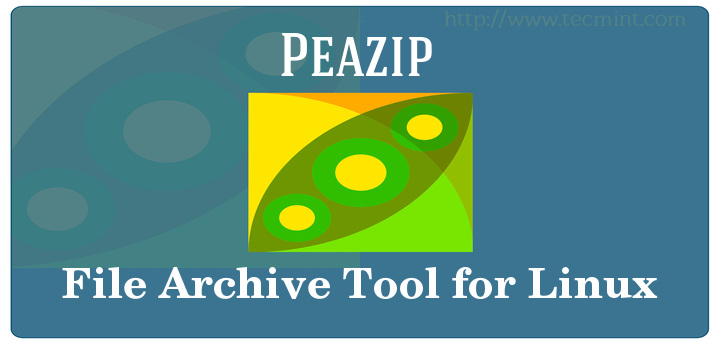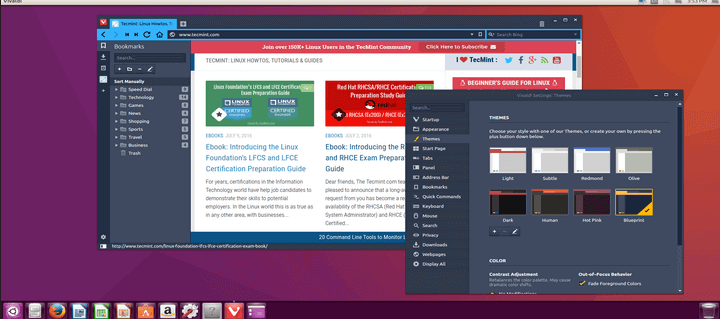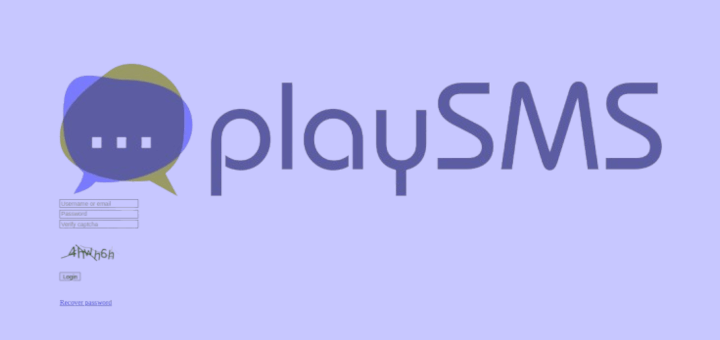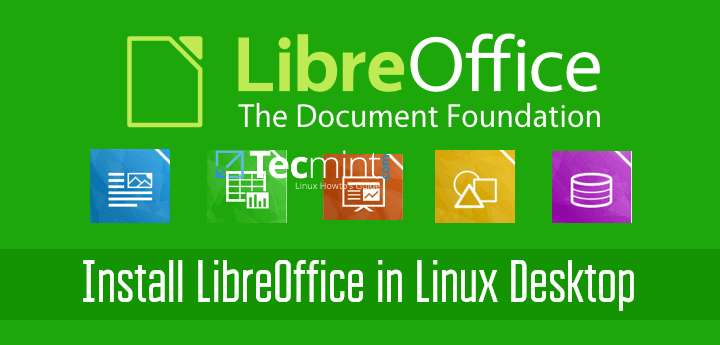The main purpose of writing this article is to provide a step-by-step guide on how to mount remote Linux file system using SSHFS client over SSH.
This article is useful for those users and system administrators who want to mount remote file system on their local systems for whatever purposes. We have practically tested by installing SSHFS client on one of our Linux system and successfully mounted remote file systems.
Before we go further installation let’s understand about SSHFS and how it works.
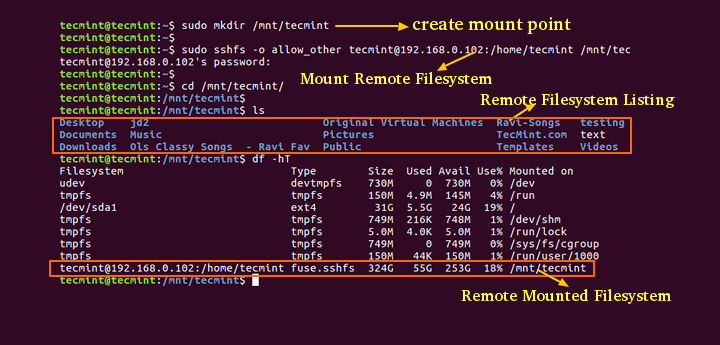
What Is SSHFS?
SSHFS stands for (Secure SHell FileSystem) client that enable us to mount remote filesystem and interact with remote directories and files on a local machine using SSH File Transfer Protocol (SFTP).
Suggested Read: 10 sFTP Command Examples to Transfer Files on Remote Servers in Linux
SFTP is a secure file transfer protocol that provides file access, file transfer and file management features over Secure Shell protocol. Because SSH uses encryption while transferring files over the network from one computer to another computer and SSHFS comes with built-in FUSE (Filesystem in Userspace) kernel module that allows any non-privileged users to create their file system without modifying kernel code.
In this article, we will show you how to install and use SSHFS client on any Linux distribution to mount remote Linux filesystem or directory on a local Linux machine.
Step 1: Install SSHFS Client in Linux Systems
By default sshfs packages does not exists on all major Linux distributions, you need to enable epel repository under your Linux systems to install sshfs with the help of Yum command with their dependencies.
# yum install sshfs # dnf install sshfs [On Fedora 22+ releases] $ sudo apt-get install sshfs [On Debian/Ubuntu based systems]
Step 2: Creating SSHFS Mount Directory
Once the sshfs package installed, you need to create a mount point directory where you will mount your remote file system. For example, we have created mount directory under /mnt/tecmint.
# mkdir /mnt/tecmint $ sudo mkdir /mnt/tecmint [On Debian/Ubuntu based systems]
Step 3: Mounting Remote Filesystem with SSHFS
Once you have created your mount point directory, now run the following command as a root user to mount remote file system under /mnt/tecmint. In your case the mount directory would be anything.
The following command will mount remote directory called /home/tecmint under /mnt/tecmint in local system. (Don’t forget replace x.x.x.x with your IP Address and mount point).
# sshfs [email protected]:/home/tecmint/ /mnt/tecmint $ sudo sshfs -o allow_other [email protected]:/home/tecmint/ /mnt/tecmint [On Debian/Ubuntu based systems]
If your Linux server is configured with SSH key based authorization, then you will need to specify the path to your public keys as shown in the following command.
# sshfs -o IdentityFile=~/.ssh/id_rsa [email protected]:/home/tecmint/ /mnt/tecmint $ sudo sshfs -o allow_other,IdentityFile=~/.ssh/id_rsa [email protected]:/home/tecmint/ /mnt/tecmint [On Debian/Ubuntu based systems]
Step 4: Verifying Remote Filesystem is Mounted
If you have run the above command successfully without any errors, you will see the list of remote files and directories mounted under /mnt/tecmint.
# cd /mnt/tecmint # ls
[root@ tecmint]# ls 12345.jpg ffmpeg-php-0.6.0.tbz2 Linux news-closeup.xsl s3.jpg cmslogs gmd-latest.sql.tar.bz2 Malware newsletter1.html sshdallow epel-release-6-5.noarch.rpm json-1.2.1 movies_list.php pollbeta.sql ffmpeg-php-0.6.0 json-1.2.1.tgz my_next_artical_v2.php pollbeta.tar.bz2
Step 5: Checking Mount Point with df -hT Command
If you run df -hT command you will see the remote file system mount point.
# df -hT
Sample Output
Filesystem Type Size Used Avail Use% Mounted on udev devtmpfs 730M 0 730M 0% /dev tmpfs tmpfs 150M 4.9M 145M 4% /run /dev/sda1 ext4 31G 5.5G 24G 19% / tmpfs tmpfs 749M 216K 748M 1% /dev/shm tmpfs tmpfs 5.0M 4.0K 5.0M 1% /run/lock tmpfs tmpfs 749M 0 749M 0% /sys/fs/cgroup tmpfs tmpfs 150M 44K 150M 1% /run/user/1000 [email protected]:/home/tecmint fuse.sshfs 324G 55G 253G 18% /mnt/tecmint
Suggested Read: 12 Useful “df” Commands to Check Disk Space in Linux
Step 6: Mounting Remote Filesystem Permanently
To mount remote filesystem permanently, you need to edit the file called /etc/fstab. To do, open the file with your favorite editor.
# vi /etc/fstab $ sudo vi /etc/fstab [On Debian/Ubuntu based systems]
Go to the bottom of the file and add the following line to it and save the file and exit. The below entry mount remote server file system with default settings.
sshfs#[email protected]:/home/tecmint/ /mnt/tecmint fuse.sshfs defaults 0 0
Make sure you’ve SSH Passwordless Login in place between servers to auto mount filesystem during system reboots..
If your server is configured with SSH key based authorization, then add this line:
sshfs#[email protected]:/home/tecmint/ /mnt/tecmint fuse.sshfs IdentityFile=~/.ssh/id_rsa defaults 0 0
Next, you need to update the fstab file to reflect the changes.
# mount -a $ sudo mount -a [On Debian/Ubuntu based systems]
Step 7: Unmounting Remote Filesystem
To unmount remote filesystem, jun issue the following command it will unmount the remote file system.
# umount /mnt/tecmint
That’s all for now, if you’re facing any difficulties or need any help in mounting remote file system, please contact us via comments and if you feel this article is much useful then share it with your friends.


